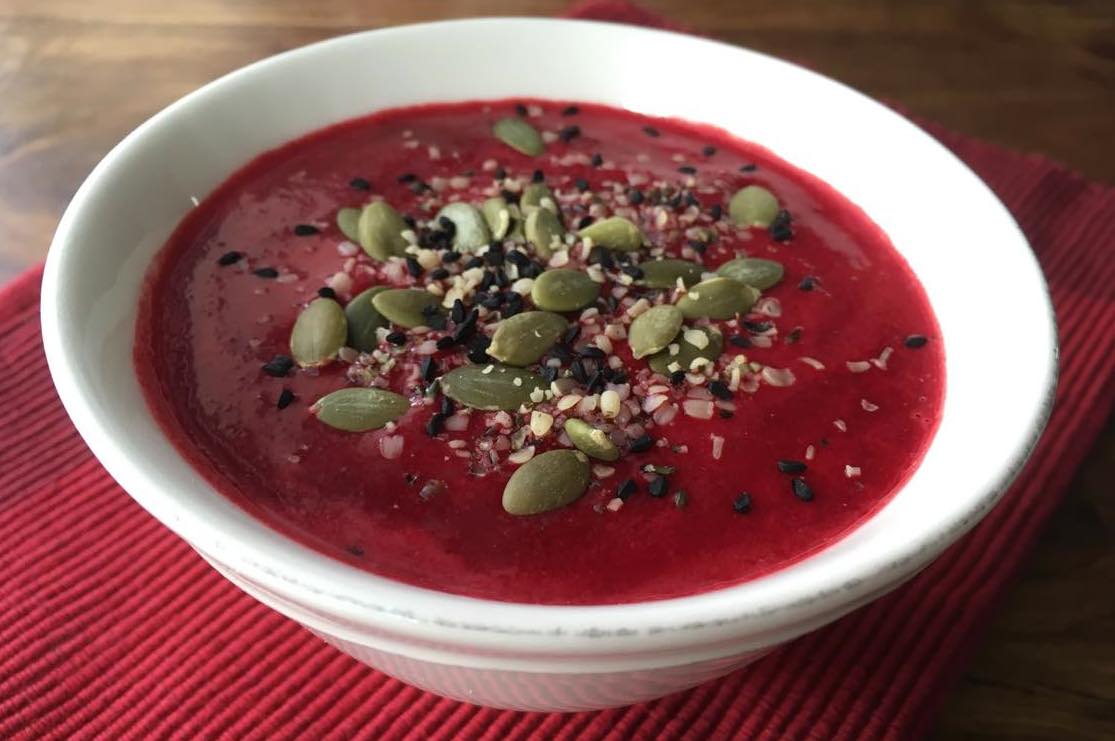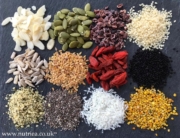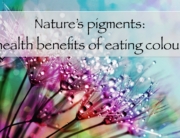The red pigments in foods have some wonderful benefits, particularly for the immune system and cardiovascular system. Eating more red foods is great for those concerned with hypertension, heart disease and arterial disease.
So let’s take the science on red phytonutrients and translate that into a delicious recipe that helps address these health concerns in a more practical way.
Betalain is a red pigment most concentrated in beets. It’s nitrogen content makes it good for reducing blood pressure and improving the function of blood vessel walls. This makes it a great protector of the cardiovascular system. It’s a water-soluble pigment so the greatest benefits come from eating beets in their raw state. As with most phytonutrients they are most concentrated in the outer layers so it’s best to just give it a scrub or minimally peel to remove the hardest parts of the skin. That way you’ll retain all the good stuff.
Lycopene is a powerful antioxidant that has been shown to reduce risk of cardiovascular diseases. Watermelon is a good source and the melon also adds quality water to this recipe. It’s hard to get decent quality water from a tap, but in the melon the water is naturally pure and structured. Lycopene is a fat-soluble compound meaning it needs some fat to aid absorption. For this I’ve added in pecan nuts for healthy fats.
Ellagic acid is another red pigment, a phenolic acid that also has heart protective benefits. Raspberries are a great source, so these are included. Pecans are also a source of ellagic acids, so the choice of them as the fat content was quite deliberate – it also gives the smoothie a wonderful creamy texture without diminishing the vibrancy of the red foods.
For those who like to explore the more esoteric aspects of colour medicine – red is the complementary opposite colour to green on the colour wheel. When we perceive a pigment as a colour it means that the colours we see are the ones the pigment hasn’t absorbed. Whatever wavelengths are not absorbed get reflected back and we perceive this as it’s colour. This means the red pigments absorb green light. Green is the colour associated with the heart centre in many eastern systems. The green energy absorbed in these pigments and then eaten helps nourish the green energy system of the body.
Ingredients:
1 small beetroot, scrubbed
1/8 watermelon, flesh including seeds
20 raspberries
20 pecan halves
Put it all in a nutri-bullet or similar high-powered blender and blitz until smooth and creamy. You can thicken with more nuts or thin with more watermelon depending on preference. I like smoothies thick and served in a bowl with some nutrition bling. Eating the smoothie with a spoon and chewing it aids the digestive process much more than just gulping it down mindlessly.
For the nutrition bling I’ve used pumpkin seeds which contain vitamin E antioxidants to protect against oxidised LDL cholesterol, the type implicated in heart disease and they also contain arginine which is associated with lower levels of c-reactive protein, an inflammatory marker linked to heart disease. Also I’ve used shelled hemp seeds and black seed which have beneficial effects on blood lipids, lowering triglycerides and LDL cholesterol as well as lowering high blood pressure.
If you’d like to explore the colour pigments in plants more read the article on this here.
If you’d like to read more on using nutrition bling to enhance your meal read here.







Leave A Comment